Nearly 70% of all freight is transported via trucks in the United States alone. Today, nearly every industry in the market relies on various types of freight trucks to transport goods, materials, equipment, and other types of cargo across vast distances.
As not all cargo is the same in terms of size, quantity, type, and storage conditions, they can’t all be transported the same way. As a result, you can find several types of freight trucks and trailers designed to meet different shipping requirements.
Semi-trucks remain one of the most popular freight vehicles since they offer a great degree of versatility. They can haul different types of cargo using specially designed trailers, such as dry van trailers, intermodal trailers, and tank trailers, just to name a few.
In this article, we’ll be sharing a list of the most common types of semi-truck trailers used by truckers today and will go in-depth on their design, specifications, and application.
1. Intermodal Trailers (Container Chassis)
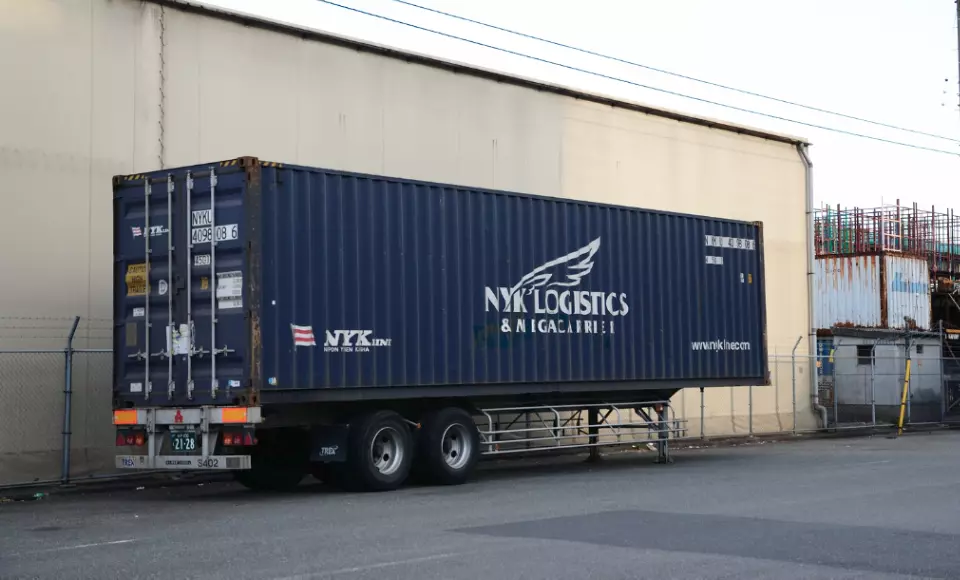
- Cargo Type: Containers
- Trailer Types: 20ft & 40ft
- Trailer Dimensions: 20 ft (H: 8’ 6”, W: 8’, L: 20’), 40 ft (H: 8’ 6”, W: 8’, L: 40’)
- Trailer Weight: 6,700lbs – 8,500 lbs
- Maximum Capacity: 80,000 lbs (GVWR)
Intermodal trailers, also known as container chassis, are among the most popular types of semi-trailers and are used to transport intermodal shipping containers to and from container depots, seaports, rail yards, and other shipping facilities.
These trailers are typically available in a 3 or 4-axle configuration and feature support beams and locks designed to hold containers in place once they’re placed on the chassis via a crane or forklift.
They can hold different types of container types and sizes, including dry storage containers, flat rack containers, open-side containers, tank containers, and even refrigerated or special-purpose containers.
2. Box Trailers (Dry Van Trailers)
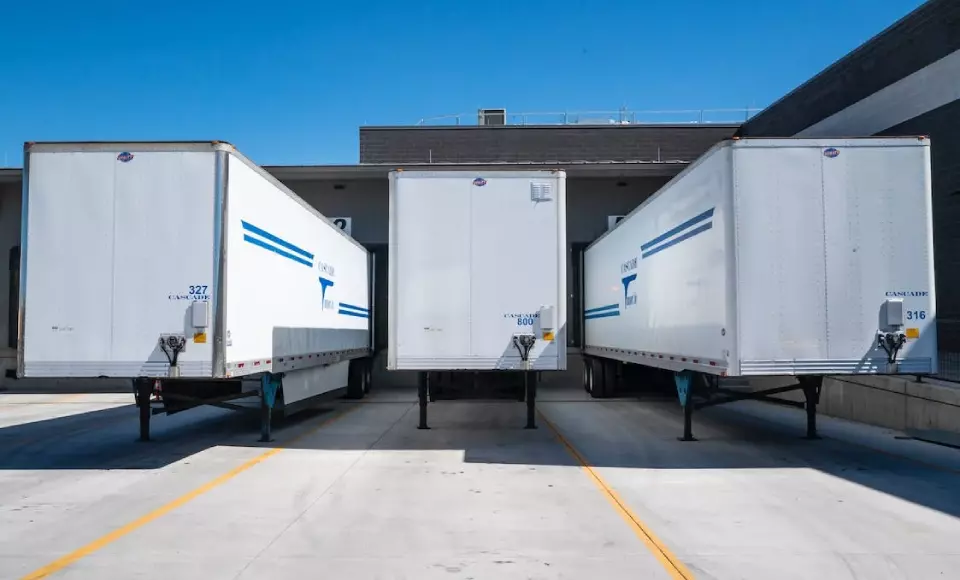
- Cargo Type: Non-perishable goods, general cargo, etc.
- Trailer Types: 53ft
- Trailer Dimensions: H: 13’ 6”, W: 8’ 6”, L: 53’
- Trailer Weight: 13,880 lbs
- Maximum Capacity: 65,000 lbs (GVWR)
Box trailers, commonly known as dry van trailers, are fully enclosed 2 or 3-axle semi-trailers used for shipping a wide variety of cargo. However, most shippers use them to transport non-perishable goods, construction-related products, and cargo that doesn’t require temperature control.
Since cargo is enclosed in the trailer, it’s protected from weather and other elements, which increases the cargo’s safety during transit. Dry van trailers require a loading dock to transfer freight in and out.
Some box trailers also feature a door at the side that allows truckers to access the cargo area for alternative loading and unloading. These types of trailers are among the most commonly available on the market.
3. Side Curtain Trailers
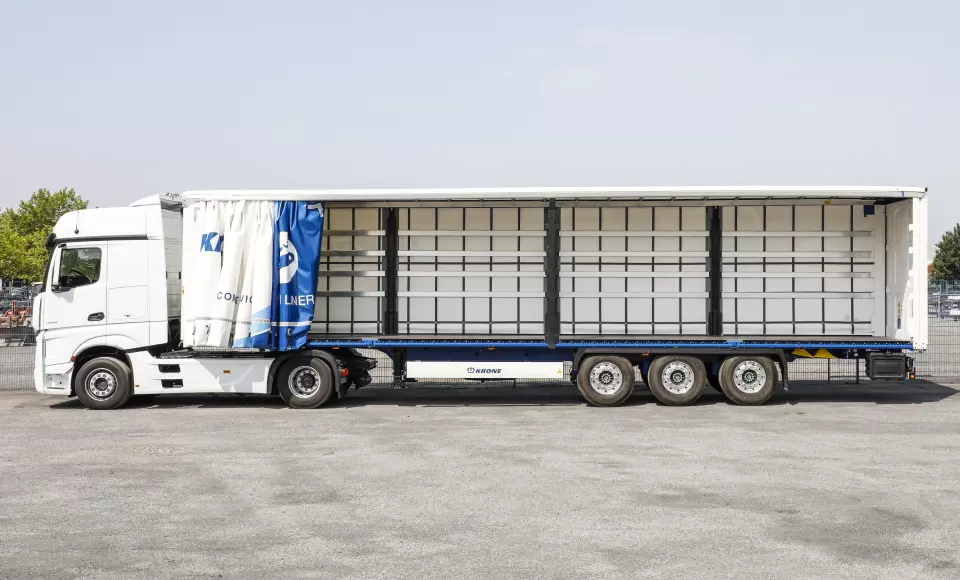
- Cargo Type: Consumer goods, lumber, etc.
- Trailer Types: 40ft
- Trailer Dimensions: H: 13’ 6”, W: 8’ 6”, L: 40’
- Trailer Weight: 15,800 lbs
- Maximum Capacity: 88,000 lbs (GVWR)
A side curtain trailer is a hybrid semi-trailer that combines the loading benefits of a flatbed trailer with a ceiling, front wall, and rear doors for cargo containment and protection. The key difference is that this trailer can be used for side loading.
Traditionally, these trailers are equipped with tarps for protection. However, modern variants feature flexible PVC-coated vinyl side curtains that can be easily retracted with an automated shuttering mechanism.
Side curtain trailers are generally used for general cargo, delicate parts & machinery, consumer goods, and lumber, to name a few. The key benefit they offer is quick forklift access on both sides of the trailer, allowing for fast loading and unloading times.
4. Refrigerator Trailers (Reefer Trailers)
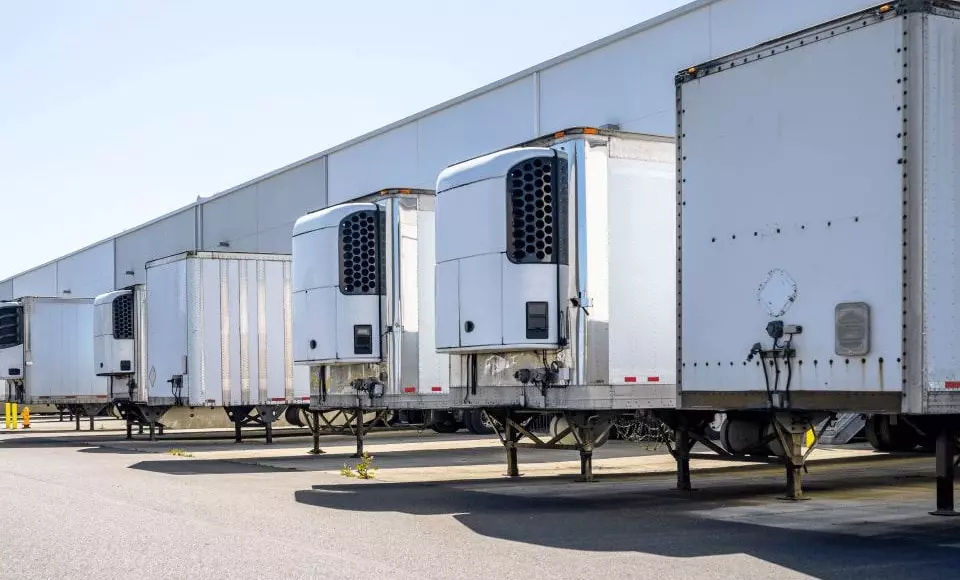
- Cargo Type: Food (meat, fish, dairy, etc.), Pharmaceuticals, and similar
- Trailer Types: 48ft, 53ft
- Trailer Dimensions: 48ft (H: 13’ 6”, W: 8’ 2”, L: 48’), 53ft (H: 13’ 6”, W: 8’ 2”, L: 53’)
- Trailer Weight: 12,500 lbs – 14,500 lbs
- Maximum Capacity: 42,000 lbs – 65,000 lbs (GVWR)
Refrigerated trailers, also known as reefer trailers, are semi-trailers equipped with a built-in temperature control system and insulation to protect temperature-sensitive shipments. Most shippers typically use them to transport pharmaceuticals and perishable food items like fish, dairy, and meat.
Reefer trailers look similar to box trailers, however, the key difference is that they’re tightly sealed and have a trailer refrigeration unit (TRU) or a genset mounted on the front wall.
5. Tanker Trailers
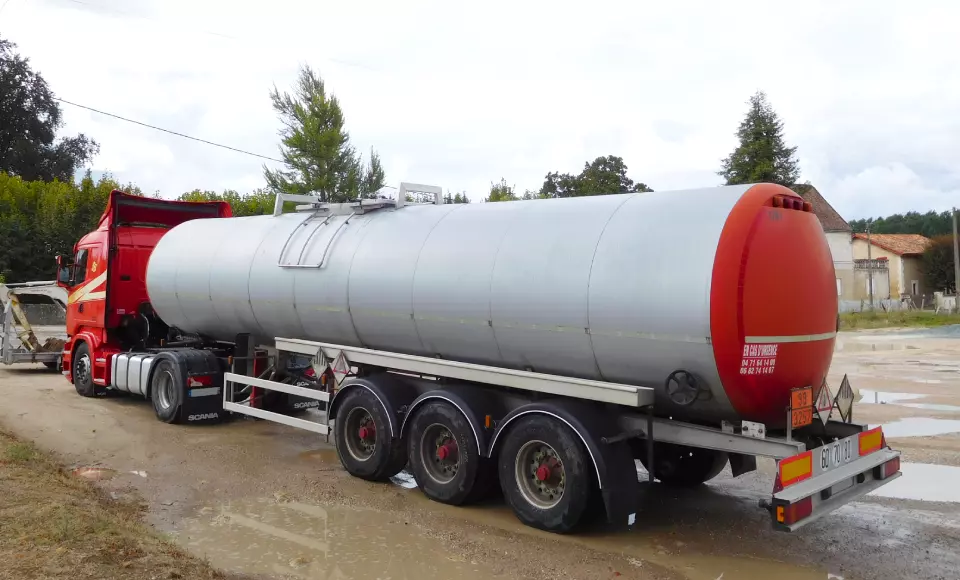
- Cargo Type: Petrochemicals, dry food, beverages, asphalt
- Trailer Types: Bulkheads, Baffles, Smoothbores
- Trailer Dimensions: 20ft (H: 8’ 6”, W: 8’, L: 20’), 53ft (H: 13’ 6”, W: 8’ 2”, L: 53’)
- Trailer Weight: 12,000 lbs – 13,000 lbs
- Maximum Capacity: 80,000 lbs (GVWR)
Tanker trailers are one of the most important semi-trailer types in the shipping industry used to transport different types of liquids. These trailers are made from high-quality stainless steel or aluminum to minimize erosion.
Their cylindrical shape lowers their center of gravity and simplifies extraction. Today, you can find many types of tanker trailers designed to move a specific type of cargo. For instance, asphalt tankers are equipped with a heating system designed to keep asphalt hot at all times.
Similarly, petroleum tankers feature multiple compartments for storing different types or grades of fuel (gasoline, diesel, kerosene, etc.). Furthermore, stainless steel tankers are typically used to transport beverages and refined products across vast distances while protecting the cargo from impurities.
6. Flatbed Trailers
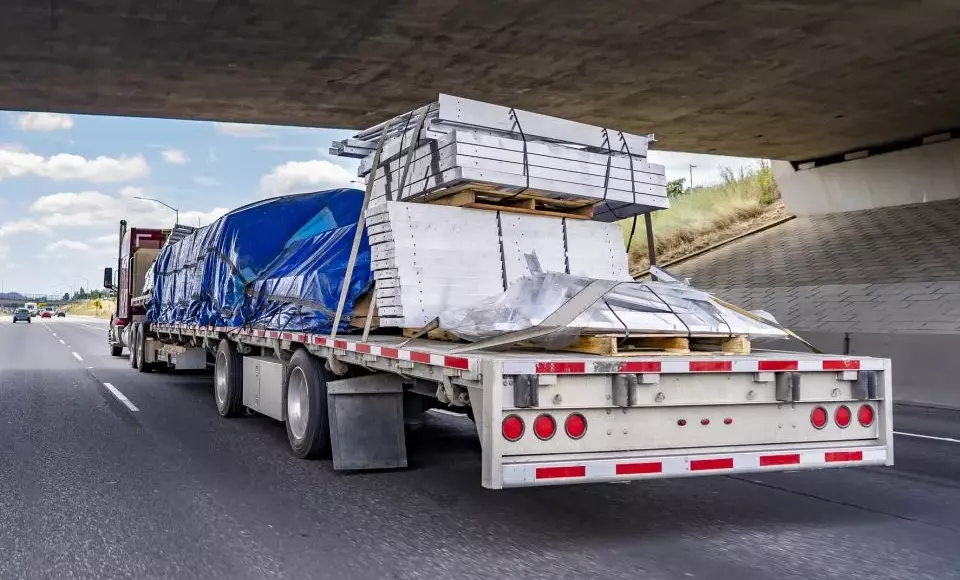
- Cargo Type: Construction materials, industrial & project cargo
- Trailer Types: 48ft, 53ft
- Trailer Dimensions: 48ft (H: 8’ 6”, W: 8’ 6”, L: 48’), 53ft (H: 8’ 6”, W: 8’ 6”, L: 53’)
- Trailer Weight: 4,700 lbs – 7,000 lbs
- Maximum Capacity: 48,000 lbs (GVWR)
Flatbed trailers are one the most commonly used semi-trailers in the market. They feature a flat deck with no containment, doors, or roof to enclose loads. As a result, they offer an open layout that allows truckers to load and unload construction materials, large machinery, as well as out of gauge (OOG) & project cargo.
Essentially, any load that doesn’t require protection from weather and other elements can be transported using flatbed trailers.
7. Lowboy Trailers
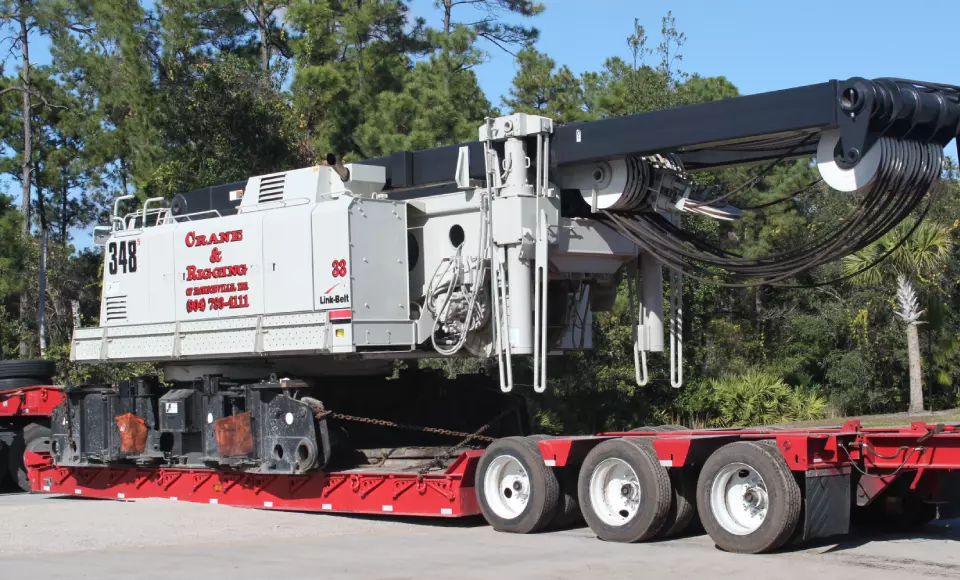
- Cargo Type: Large equipment & machinery
- Trailer Types: Fixed Neck, Fixed Gooseneck, Removable Gooseneck
- Trailer Dimensions: H: 11’ 6” – 12’, W: 8’ 6”, L: 24’ – 29’ 6”
- Trailer Weight: 7,000 lbs – 10,000 lbs
- Maximum Capacity: 40,000 lbs (2 axles) – 80,000 lbs (>2 axles)
Lowboy trailers are a unique type of semi-trailer featuring an extremely low deck due to two drops in deck height from the gooseneck and the wheels. The primary purpose of this trailer type is to transport tall equipment or cargo without the need to obtain height permits.
Its lower center of gravity also allows truckers to install additional axles to transport more cargo in a single trip. Lowboys are generally used to transport oversized materials from mining sites, bulldozers, heavy machinery, large vehicles, and excavators.
8. Step Deck Trailers

- Cargo Type: Tall cargo
- Trailer Types: 48ft, 53ft
- Trailer Dimensions: 48ft (H: 10, W: 8’ 6”, L: 48’), 53ft (H: 10, W: 8’ 6”, L: 53’)
- Trailer Weight: N/A
- Maximum Capacity: 48,000 Lbs (GVWR)
Step deck trailers are semi-trailers similar to flatbeds. However, they have two deck levels (upper and lower) used to haul cargo of varying heights. Step deck trailers are commonly used to carry cargo that fails to meet the height clearance requirements for flatbed trailers, including large vehicles, machinery, etc.
The lower deck typically sits around three feet above the ground, whereas the upper deck sits above the tractor unit. They typically feature a loading ramp at the back of the trailer to facilitate the loading and unloading of vehicles.
9. Double Drop Trailers
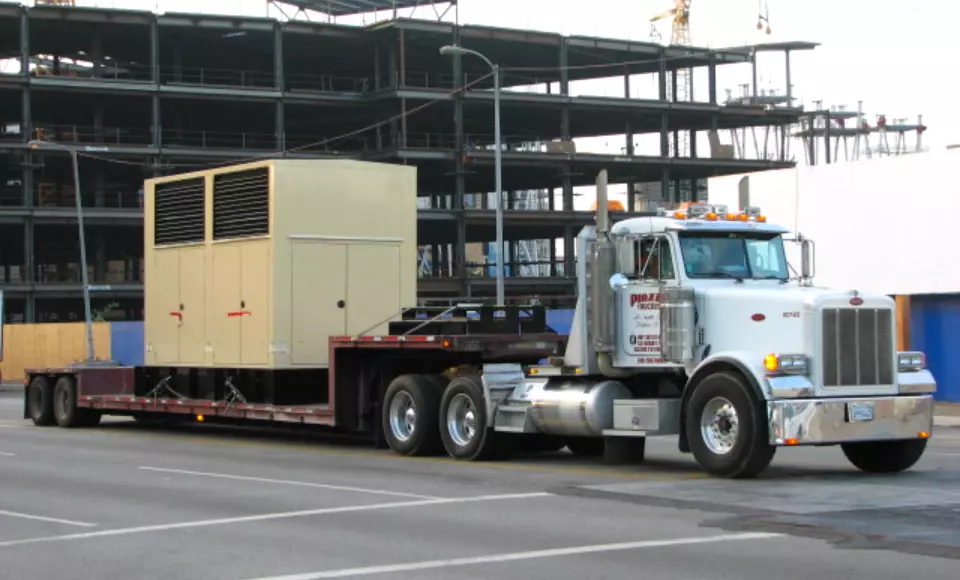
- Cargo Type: Large equipment & machinery
- Trailer Types: Fixed Neck, Fixed Gooseneck, Removable Gooseneck
- Trailer Dimensions: H: 11’ 6” – 12’, W: 8’ 6”, L: 24’ – 29’ 6”
- Trailer Weight: 7,000 lbs – 10,000 lbs
- Maximum Capacity: 40,000 lbs (2 axles) – 80,000 lbs (>2 axles)
A double drop trailer is a semi-trailer with a deck that drops below the trailer and truck axles, creating a gap between the gooseneck and the first axle. These trailers serve the same functions as flatbeds, such as transporting large and heavy cargo with abnormal proportions. The only difference is that they offer more height clearance.
10. Extendable Trailers
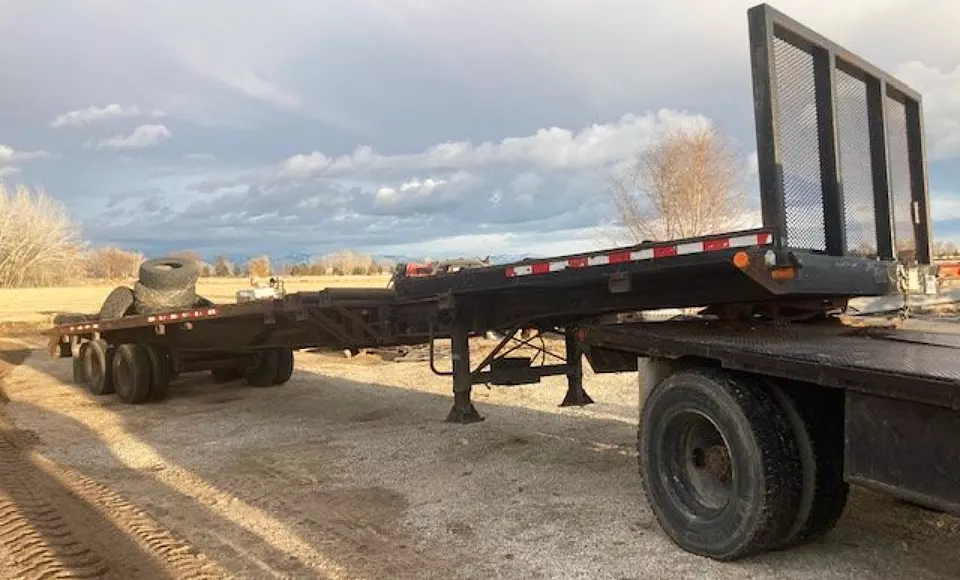
- Cargo Type: Long cargo
- Trailer Types: Length & width extendable
- Trailer Dimensions: H: 12’, W: 9’ – 12’, L: variable
- Trailer Weight: 10,000 lbs – 25,000 lbs
- Maximum Capacity: 200,000 lbs (GVWR)
Extendable or expandable semi-trailers feature a length and width extension mechanism that enables truckers to transport cargo of varying sizes. The front and rear chassis of this trailer can be disconnected and supported through multiple wheel and axle assemblies.
Generally, you can find two types of expandable semi-trailers in the market – longitudinally extendable trailers (extendable length) and width extendable trailers. Longitudinally extendable trailers are used to move extremely long cargo, such as airplane parts, wind turbine blades, and bridge sections.
Similarly, width-extendable trailers are used to haul large pieces of equipment and machinery that exceeds standard trailer widths (8’ 6”).
11. Livestock Trailer
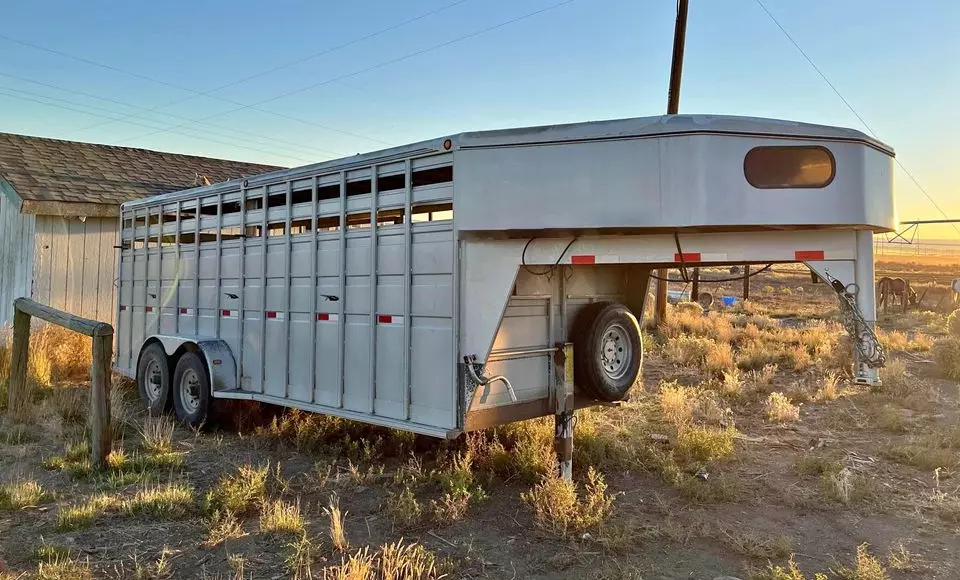
- Cargo Type: Livestock (cattle, poultry, etc.)
- Trailer Types: 34ft, 53ft
- Trailer Dimensions: 53ft (H: 10’, W: 8’ 6”, L: 53’), 34ft (H: 10, W: 8’ 6”, L: 34’)
- Trailer Weight: 10,000 lbs – 20,000 lbs
- Maximum Capacity: 80,000 lbs (GVWR)
As the name suggests, livestock trailers are used to move cattle, sheep, and other types of livestock from one location to another. As these trailers are designed specifically for animals, they generally feature large sliding doors at the rear end and require a loading ramp to move livestock in and out.
These large freight vehicles come in two lengths – 34ft and 53ft (there are also smaller versions designed for smaller trucks). As a result, operators can choose one based on the scale of their operations.
12. Car Carrier Trailers (Car Hauler Trailers)
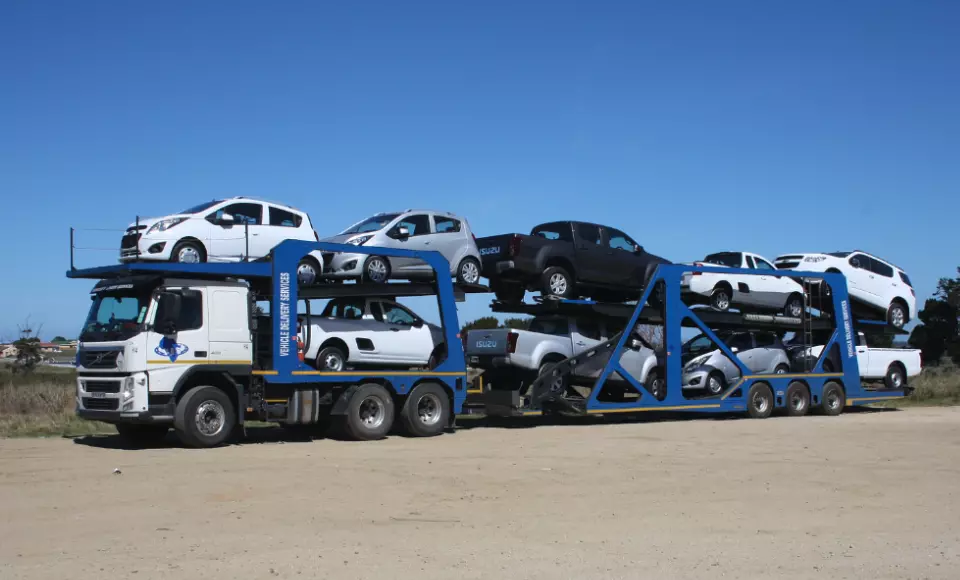
- Cargo Type: Vehicles (Sedans, SUVs, trucks, etc.)
- Trailer Types: Single Decker, Double Decker
- Trailer Dimensions: –
- Trailer Weight: –
- Maximum Capacity: 80,000 lbs (GVWR)
Car carrier trailers are one of the most popular types of semi-trailers in the United States and are used to transport passenger vehicles across the country. These trailers can be either enclosed or open and are equipped with hydraulic-powered ramps for simplified loading and unloading.
These carriers are available in single and double-decker configurations and can easily transport 5-7 vehicles on each deck, depending on the vehicle type (sedan, SUV, truck, etc.) and size.
13. Dry Bulk Trailers
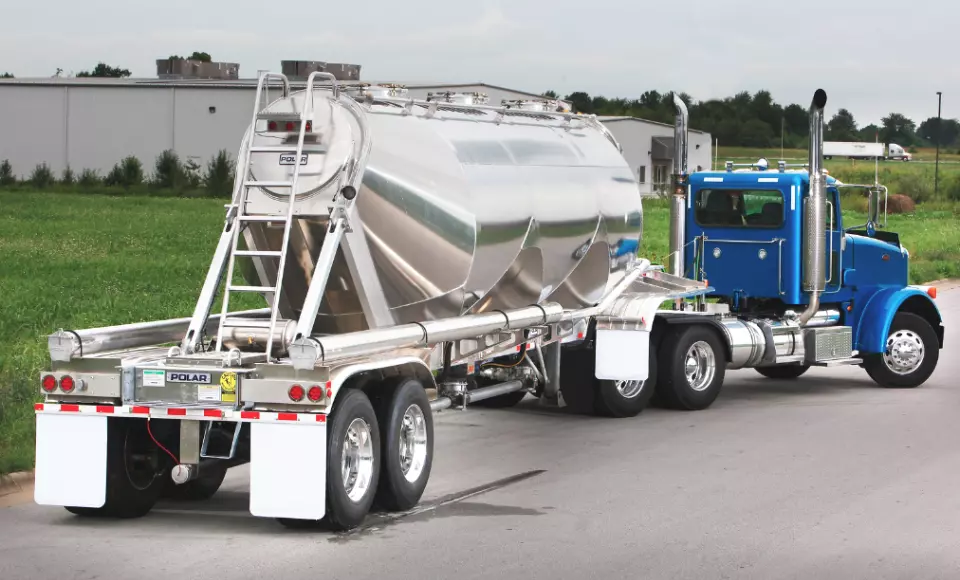
- Cargo Type: Bulk cargo
- Trailer Types: 20ft, 40ft
- Trailer Dimensions: H: 12’ 4’’, W: 8’ 2”, L: 31’
- Trailer Weight: 9,000 lbs
- Maximum Capacity: 30 – 80 cbm
Dry bulk trailers, also known as pneumatic tankers, are used to transport dry goods, such as flour, maize, cement, sand, and similar commodities. These tankers are fully enclosed and vacuum-sealed to prevent any type of leakage.
They are loaded from the top and include cone-shaped hoppers and valves at the bottom which enable simplified unloading. Many companies employ pumps to extract the goods and transport them directly to a storage facility.
14. Dump Trailers
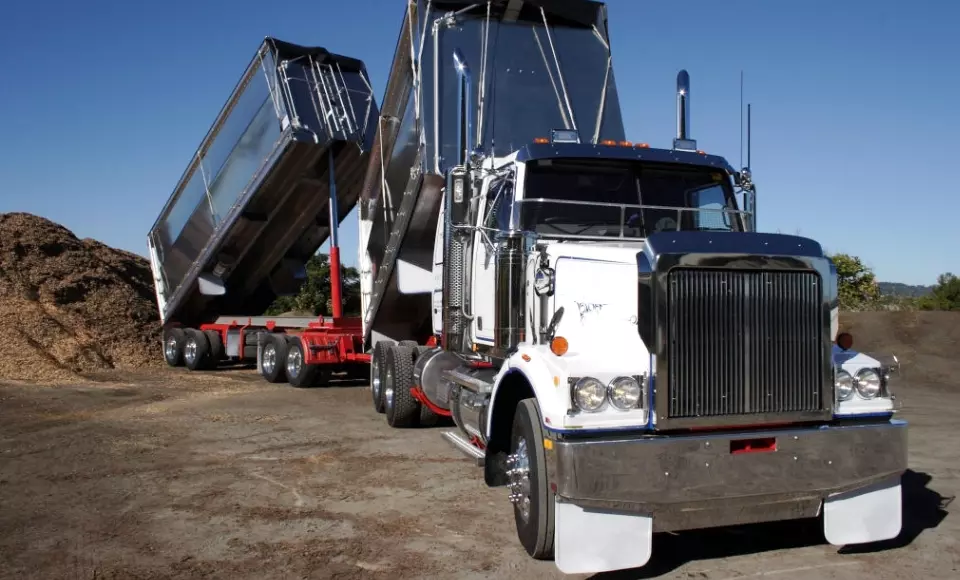
- Cargo Type: Gravel, sand, and similar materials
- Trailer Types: 45ft
- Trailer Dimensions: H: 13’ 6’’, W: 8’ 6”, L: 45’
- Trailer Weight: 4,750 lbs
- Maximum Capacity: 40,000 lbs (GVWR)
Dump trailers are semi-trailers equipped with a hydraulic lift that enables gravity-assisted unloading through lifting to create a slope. Some dump trailers tilt the bed to one side, whereas others tilt it from the front.
These trailers are typically used to transport different payloads, including gravel, cement, stone, and similar materials. However, they’re not suitable for transporting finer materials or liquids.
15. Hopper-Bottom Trailers
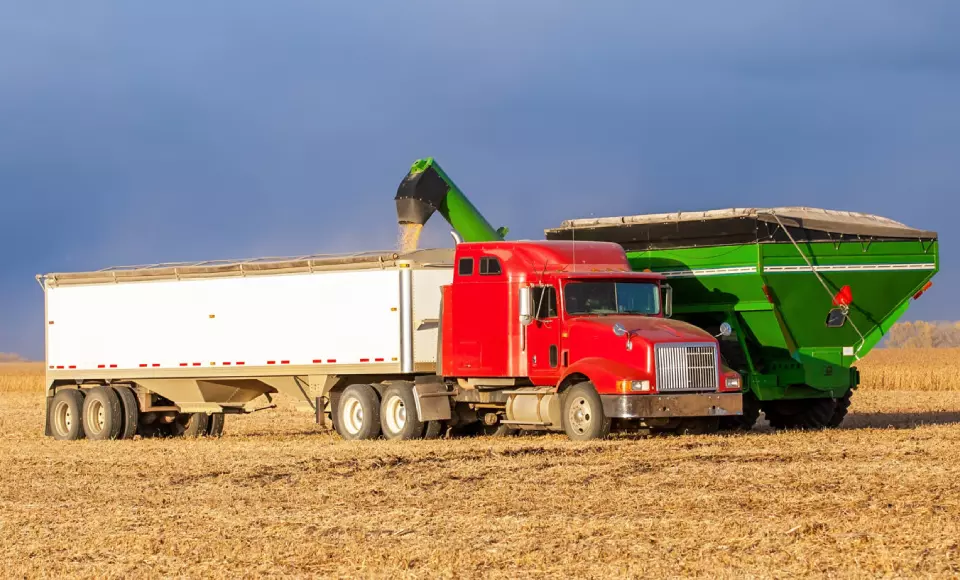
- Cargo Type: Grain
- Trailer Types: Single Axle, Tandem Axle, Triple Axle
- Trailer Dimensions: H: 5’ 8’’, W: 8’, L: 21’ 8” – 50’
- Trailer Weight: 23,000 – 24,000 lbs (steel/aluminum)
- Maximum Capacity: 120,000 lbs (GVWR)
A hopper-bottom or grain hopper trailer is used to haul bulk commodity goods, such as wheat, rye, maize, rice, and others, throughout the country. These trailers are typically equipped with a rolling tarp that enables quick and easy loading/unloading as well.
Many truckers and operators use this trailer with agricultural machinery on farmlands for harvesting purposes to save time and eliminate the need for intermediate storage.
16. Liftgate Trailers
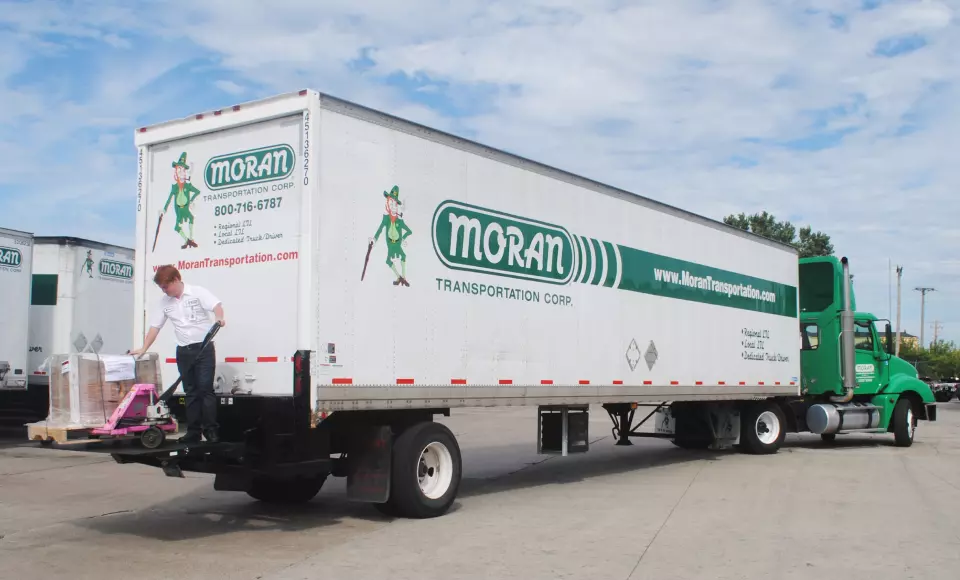
- Cargo Type: Packaged Goods
- Trailer Types: N/A
- Trailer Dimensions: H: 12’ 6” – 13’, W: 8’ 6”, L: 22’ – 26’
- Trailer Weight: 8,000 lbs
- Maximum Capacity: 33,000 lbs
Liftgate trailers feature a small deck at the end of a trailer than opens up with the push of a button. These trailers are commonly used by truckers that transport packaged goods in pellets.
Liftgates serve as mini freight elevators they can use to easily load and unload cargo with minimal labor. These trailers are preferred to be used in locations without forklifts or loading ramps.
17. Gooseneck Trailers
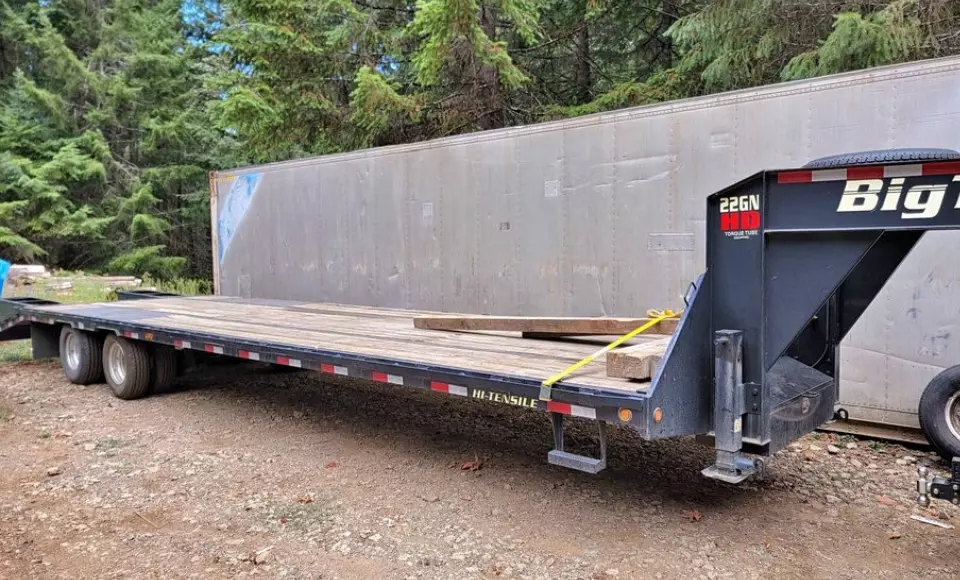
- Cargo Type: Construction Equipment
- Trailer Types: N/A
- Trailer Dimensions: H: 11’ 7”, W: 8’ 6”, L: 29’
- Trailer Weight: N/A
- Maximum Capacity: 42,000 lbs
Gooseneck trailers are used in the trucking industry to haul oversized cargo that can’t be transported on regular highways to its final destination. This includes excavators, bulldozers, cranes, and other construction equipment.
There are also removable gooseneck trailers featuring a unique design that allows truckers to remove the gooseneck in the front and turn it into a ramp for easy loading.
18. Conestoga Trailers
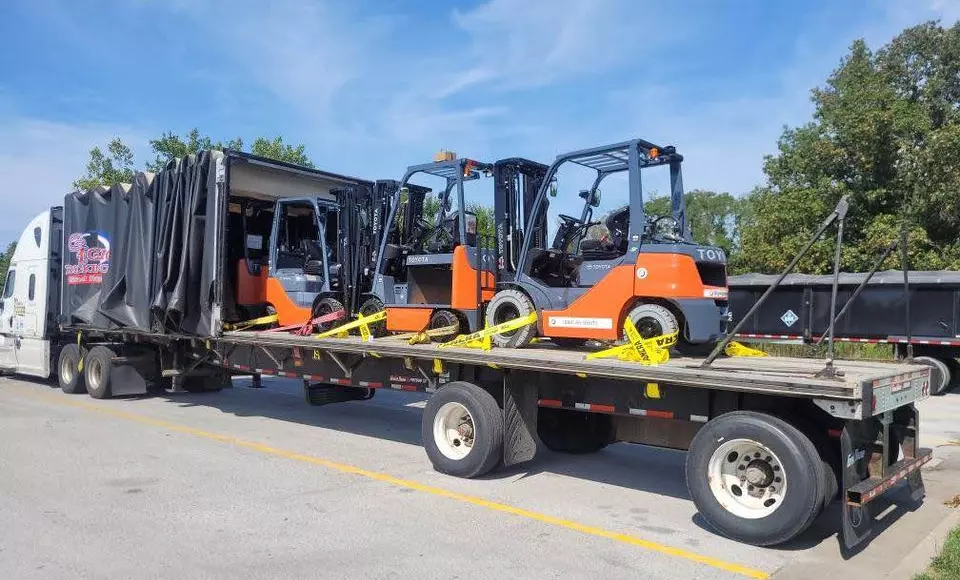
- Cargo Type: General products & machinery
- Trailer Types: Flatbed, Double Drop, Step Deck
- Trailer Dimensions: H: 8’ – 9’, W: 8’ 6”, L: 48’ – 53’
- Trailer Weight: –
- Maximum Capacity: 44,000 lbs
Conestoga trailers are highly sought-after, specialized variants of flatbed, double drop, and step deck trailers. They feature a retractable tarping system that covers the entire deck’s length.
These trailers are generally used to transport goods that require protection from road debris, rain, and other elements. Due to the retractable system, they enable loading and unloading from both sides as well as the rear end.
19. Side Kit Trailers
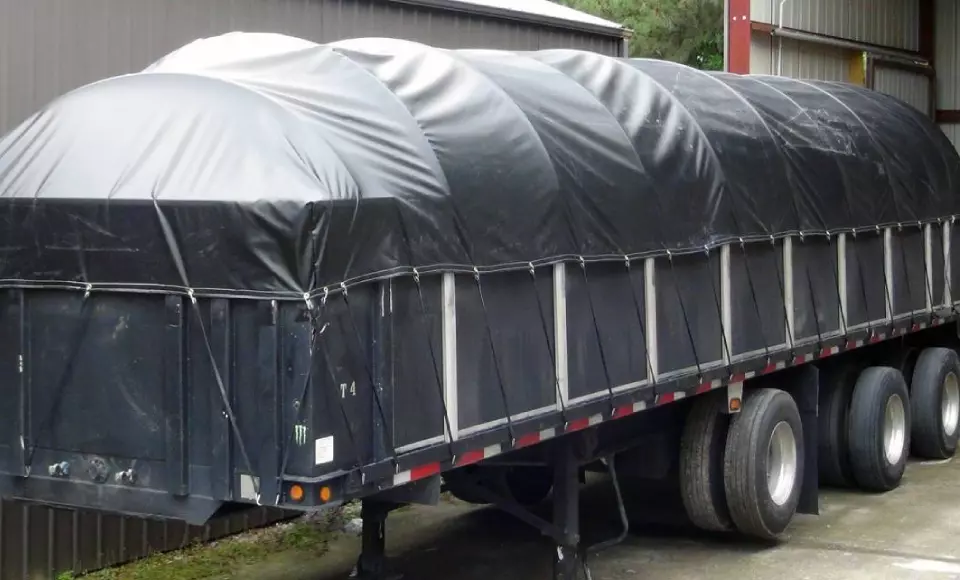
- Cargo Type: General cargo
- Trailer Types: Flatbed, Drop Deck
- Trailer Dimensions: H: 8’ 7”, W: 8’ 4”, L: 48’ – 53’
- Trailer Weight: –
- Maximum Capacity: 42,000 lbs to 58,000 lbs
Side kit trailers (also known as flatbed trailers with side kits) are versions of flatbed trailers with a series of walls and stakes attached to the bed. These trailers are used for transporting all types of cargo that need protection from weather and other elements.
Once the cargo is loaded, the trailers are covered with a tarp, which is securely fastened several times on each side.
20. Bus Trailers
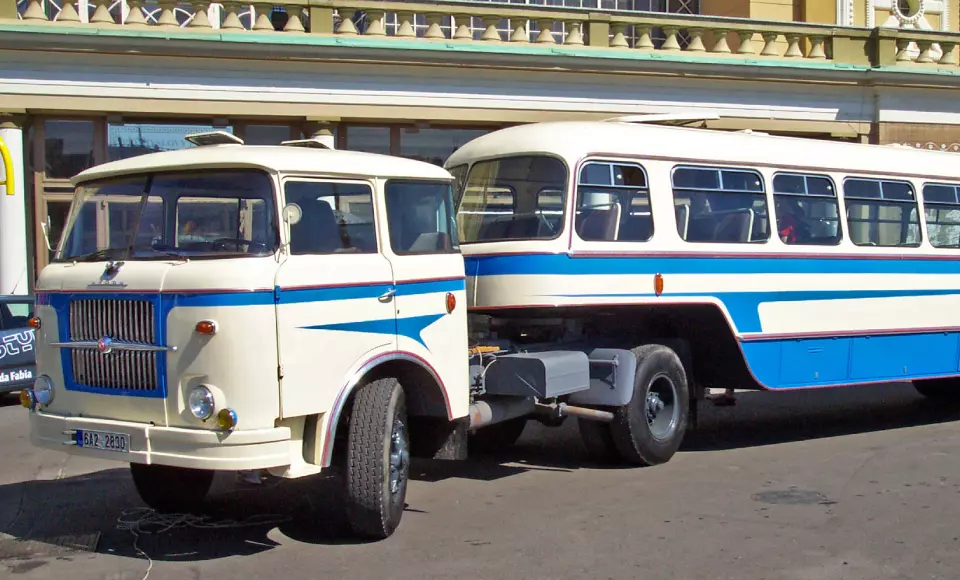
- Cargo Type: Passengers
- Trailer Types: –
- Trailer Dimensions: –
- Trailer Weight: –
- Maximum Capacity: –
Bus trailers are one of the oldest types of semi-trailers and have been replaced by more comfortable modes of transportation in most parts of the world. They’re designed specifically to carry passengers from one place to another, just like a bus.
The key difference is that the passenger area is separate from the driver’s cabin and is attached to a semi-truck via its fifth wheel.

Get Free Course Access
If you enjoyed the article, don’t miss out on our free supply chain courses that help you stay ahead in your industry.

Andrew Lin
Co-Founder & Writer
at freightcourse
About the Author
Andrew is a multi-business owner with over 12 years of experience in the fields of logistics, trucking, manufacturing, operations, training, and education.
Being the co-founder of freightcourse has given him the ability to pursue his desire to educate others on manufacturing and supply chain topics.
Follow us